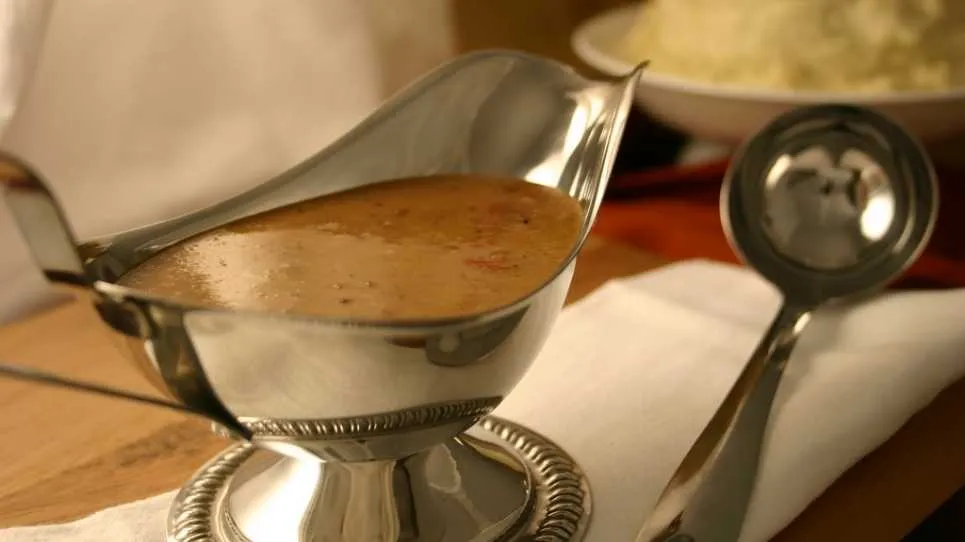Learn the basics of making gravy, from simple to complex recipes

Gravy is a delicious and versatile sauce that can be served with a variety of dishes, including roast chicken, beef, or turkey. It’s also a great way to use up leftover meat drippings.
In this blog post, we’ll teach you how to make gravy like a pro. We’ll cover the basics, as well as some more advanced techniques.
What is gravy?
Gravy is a sauce made from the juices of cooked meat or vegetables. It’s usually thickened with flour or cornstarch.
Gravy can be made from a variety of ingredients, including:
- Meat drippings: These are the juices that come out of meat when it’s cooked.
- Vegetable broth: This is a flavorful liquid made from vegetables.
- Milk: This adds richness and creaminess to gravy.
- Wine: This adds acidity and depth of flavor to gravy.
Why is gravy important?
Gravy is important because it:
- Adds flavor and moisture to food.
- Makes food more appealing.
- Can help to bind together different ingredients.
How to make gravy
There are two main types of gravy: pan gravy and white gravy.
Pan gravy is made from the juices that come out of meat when it’s cooked. It’s the simplest type of gravy to make.
To make pan gravy, simply:
- Remove the meat from the pan and set it aside.
- Add a tablespoon of flour or cornstarch to the pan and whisk until smooth.
- Gradually add the meat drippings, whisking constantly.
- Bring the gravy to a boil, then reduce heat and simmer for 5 minutes, or until thickened.
White gravy is made with a roux, which is a mixture of flour and butter. It’s a more versatile type of gravy that can be used with a variety of dishes.
To make white gravy, simply:
- Melt 2 tablespoons of butter in a saucepan over medium heat.
- Whisk in 2 tablespoons of flour until smooth.
- Gradually whisk in 1 cup of milk, or until desired consistency is reached.
- Bring the gravy to a boil, then reduce heat and simmer for 5 minutes, or until thickened.
Advanced gravy techniques
There are a few advanced gravy techniques you can use to add flavor and complexity to your gravy.
Deglazing the pan: Deglazing is a technique of adding liquid to a hot pan to dissolve the browned bits of food that stick to the bottom. These bits of food, known as fond, add flavor and depth to gravy.
To deglaze a pan, simply add a small amount of liquid, such as wine, broth, or water, to the pan and bring to a boil. Scrape the bottom of the pan with a wooden spoon to loosen the fond.
Adding herbs and spices: Herbs and spices can add a lot of flavor to gravy. Some common herbs and spices used in gravy include:
- Thyme
- Rosemary
- Parsley
- Basil
- Salt
- Pepper
Adding cheese: Cheese can add richness and depth of flavor to gravy. Some common cheeses used in gravy include:
- Parmesan
- Cheddar
- Gruyère
- Monterey Jack
Conclusions
Gravy is a delicious and versatile sauce that can be made with a variety of ingredients. With a little practice, you’ll be making gravy like a pro in no time.
Recommendations
Here are a few resources where you can learn more about gravy:
- The Food Network: The Food Network has a variety of recipes and tutorials for making gravy.
- Allrecipes: Allrecipes is another great resource for gravy recipes.
- The Spruce Eats: The Spruce Eats has a comprehensive guide to making gravy.
Find this and many more knowledge guides on Monkicon